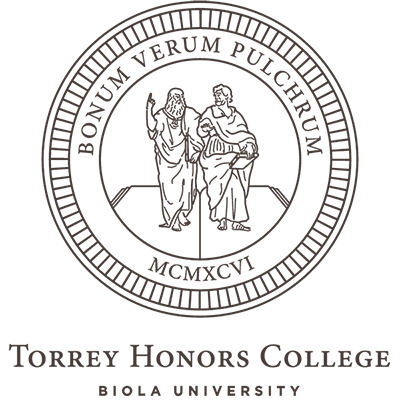A scene from The Canterbury Psalter (12th century)
Blog
Directional Consubstantiality
The Nicene Creed (381) calls the Son “begotten from the Father” and also “same-in-substance with the Father.” These two phrases can be treated as two claims that are distinct from each other, or perhaps as two ways of arguing to the same conclusion (the full deity of the Son).
It can be analytically helpful to isolate them this way. To claim that the Son is begotten from the Father is to make a claim about his hypostatic relation to his necessary principle or origin. But to claim that he is same-in-substance is to make a claim about his substance. The former is eternal generation, the latter consubstantiality. Both converge on the judgement that the Son is God, but they are different paths to that insight. It might especially be helpful to distinguish these things if you were inclined to affirm one but not both.
In fact, some Trinitarians have been less than fully convinced by the doctrine of eternal generation, and have made consubstantiality do all the work. B.B. Warfield seems to have viewed “begotten from the Father” as a kind of principle of subordination that needed to be balanced or corrected by “same-in-substance” as a principle of equalization. Warfield even argued that the biblical word ‘Son’ itself primarily indicated sameness of essence rather than fromness or origin. I think this is wrong, and that Warfield mingled a few such mistakes into his otherwise helpful discussions of the Trinity.
I want to point out that there is already a mistake in thinking of eternal generation and consubstantiality as being distinct claims. The distinction is overly tidy, as the two are at least so mutually implicated that we can’t choose between them. In particular, that famous word homoousios, same-in-substance, carries along within itself a claim about origin or principle.
Historically speaking, the pro-Nicene usage of the word homoousios included a derivative or directional aspect. In De Synodis 51, Athanasius argues that in its theological sense, there is not so much an essence that two persons both have, but that one must have it from the other. If we attend to this directional or derivative aspect of homoousios, we wouldn’t call two sons consubstantial with each other, but we would call them each consubstantial with their father. This sounds like nonsense! But it is only nonsense if we have been thinking of homoousios as being a flat or textureless concept, indicating an essence which two or three persons can have regardless of their relation to each other. Athanasius’ point is that it was not that in pro-Nicene usage. In fact, if we were attending carefully to this directionality presupposed by the specific notion of consubstantiality, we would avoid saying that the Father is homoousios with the Son. Noting its directionality, we would not consider it reversible.1
I am aware that this is counterintuitive if you have becomes accustomed to considering consubstantiality to be a mere claim about a substance and who has it. But if it always included a claim about how one has the substance, then we should revise our intuitions about what it entails. In the context of reading the 381 creed, we can say that both “begotten from the Father” and “same-in-substance with the Father” are relational statements indicating how the Son is related to the Father. In the creedal sequence, homoousios is an advance, a step taken forward by layering the notion of substance (explicitly) onto the claim of origin (where same-substance might be implicit, but is surely not made explicit). But it neither leaves behind begottenness nor merely presupposes it. The directionality or derivation build into the word’s usage reiterates begottenness even as it adds consubstantiality.
In his popular-level theological work The Christian’s Reasonable Service, Wilhelmus a Brakel considers the proposal that we should think of the title ‘Son’ as coming from the second person’s consubstantiality with the Father. But he considers the proposal to be an attempt to evade the claims of eternal generation, and so he rejects the proposal. Eternal generation, he says, is the sole and sufficient basis of Sonship (Reasonable Service I:150). That’s a good answer. Mere “same essence” does not constitute sonship, if by “same essence” we mean no more than a claim about essence. But that would be a failure to register that Son is downstream from Father, receiving the essence from him as such.
__________________________________
1I have a vague memory of noticing that the word begins to be used reversibly at some later point in the Greek theological tradition, and I think I’ve run across statements that the Father is homoousios with the Son. I have failed to make notes of these. They would certainly complicate my point, and maybe require me to specify a period within which the usage rule holds sway.
The observation about De Synodis 51 is from R. P. C. Hanson, The Search for the Christian Doctrine of God: The Arian Controversy 318-381 (Edinburgh: T. & T. Clark, 1988), 441. Hanson is inclined to think that Athanasius reads this directional meaning into homoousios, putting it there rather than finding it there.
G.C. Stead (Divine Substance, 260-6) makes a related point about the word’s specific sense: homoousios is not to be used indiscriminately of God and Christ, or of the relation of the sun to its beam, but should be reserved for statements about the imagery of Father and Son. Stead says it communicates organic continuity, not identity.
About This Blog

Fred Sanders is a theologian who tried to specialize in the doctrine of the Trinity, but found that everything in Christian life and thought is connected to the triune God.


